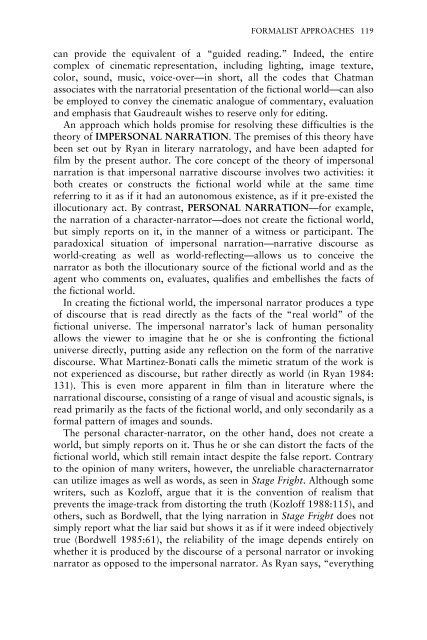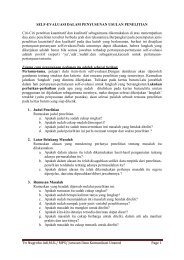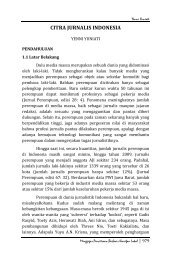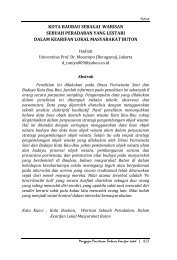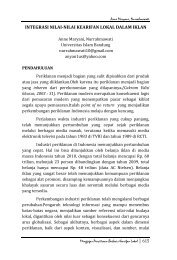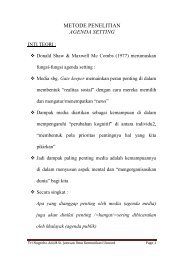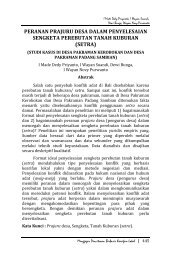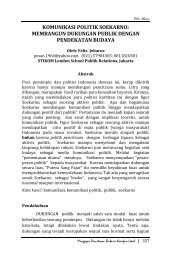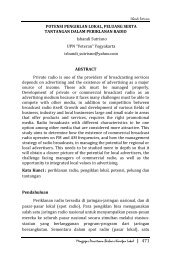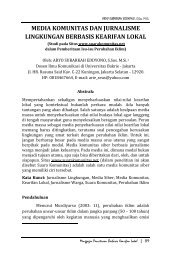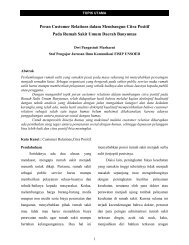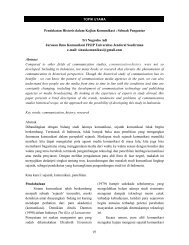New Vocabularies in Film Semiotics
New Vocabularies in Film Semiotics
New Vocabularies in Film Semiotics
You also want an ePaper? Increase the reach of your titles
YUMPU automatically turns print PDFs into web optimized ePapers that Google loves.
FORMALIST APPROACHES 119<br />
can provide the equivalent of a “guided read<strong>in</strong>g.” Indeed, the entire<br />
complex of c<strong>in</strong>ematic representation, <strong>in</strong>clud<strong>in</strong>g light<strong>in</strong>g, image texture,<br />
color, sound, music, voice-over—<strong>in</strong> short, all the codes that Chatman<br />
associates with the narratorial presentation of the fictional world—can also<br />
be employed to convey the c<strong>in</strong>ematic analogue of commentary, evaluation<br />
and emphasis that Gaudreault wishes to reserve only for edit<strong>in</strong>g.<br />
An approach which holds promise for resolv<strong>in</strong>g these difficulties is the<br />
theory of IMPERSONAL NARRATION. The premises of this theory have<br />
been set out by Ryan <strong>in</strong> literary narratology, and have been adapted for<br />
film by the present author. The core concept of the theory of impersonal<br />
narration is that impersonal narrative discourse <strong>in</strong>volves two activities: it<br />
both creates or constructs the fictional world while at the same time<br />
referr<strong>in</strong>g to it as if it had an autonomous existence, as if it pre-existed the<br />
illocutionary act. By contrast, PERSONAL NARRATION—for example,<br />
the narration of a character-narrator—does not create the fictional world,<br />
but simply reports on it, <strong>in</strong> the manner of a witness or participant. The<br />
paradoxical situation of impersonal narration—narrative discourse as<br />
world-creat<strong>in</strong>g as well as world-reflect<strong>in</strong>g—allows us to conceive the<br />
narrator as both the illocutionary source of the fictional world and as the<br />
agent who comments on, evaluates, qualifies and embellishes the facts of<br />
the fictional world.<br />
In creat<strong>in</strong>g the fictional world, the impersonal narrator produces a type<br />
of discourse that is read directly as the facts of the “real world” of the<br />
fictional universe. The impersonal narrator’s lack of human personality<br />
allows the viewer to imag<strong>in</strong>e that he or she is confront<strong>in</strong>g the fictional<br />
universe directly, putt<strong>in</strong>g aside any reflection on the form of the narrative<br />
discourse. What Mart<strong>in</strong>ez-Bonati calls the mimetic stratum of the work is<br />
not experienced as discourse, but rather directly as world (<strong>in</strong> Ryan 1984:<br />
131). This is even more apparent <strong>in</strong> film than <strong>in</strong> literature where the<br />
narrational discourse, consist<strong>in</strong>g of a range of visual and acoustic signals, is<br />
read primarily as the facts of the fictional world, and only secondarily as a<br />
formal pattern of images and sounds.<br />
The personal character-narrator, on the other hand, does not create a<br />
world, but simply reports on it. Thus he or she can distort the facts of the<br />
fictional world, which still rema<strong>in</strong> <strong>in</strong>tact despite the false report. Contrary<br />
to the op<strong>in</strong>ion of many writers, however, the unreliable characternarrator<br />
can utilize images as well as words, as seen <strong>in</strong> Stage Fright. Although some<br />
writers, such as Kozloff, argue that it is the convention of realism that<br />
prevents the image-track from distort<strong>in</strong>g the truth (Kozloff 1988:115), and<br />
others, such as Bordwell, that the ly<strong>in</strong>g narration <strong>in</strong> Stage Fright does not<br />
simply report what the liar said but shows it as if it were <strong>in</strong>deed objectively<br />
true (Bordwell 1985:61), the reliability of the image depends entirely on<br />
whether it is produced by the discourse of a personal narrator or <strong>in</strong>vok<strong>in</strong>g<br />
narrator as opposed to the impersonal narrator. As Ryan says, “everyth<strong>in</strong>g


